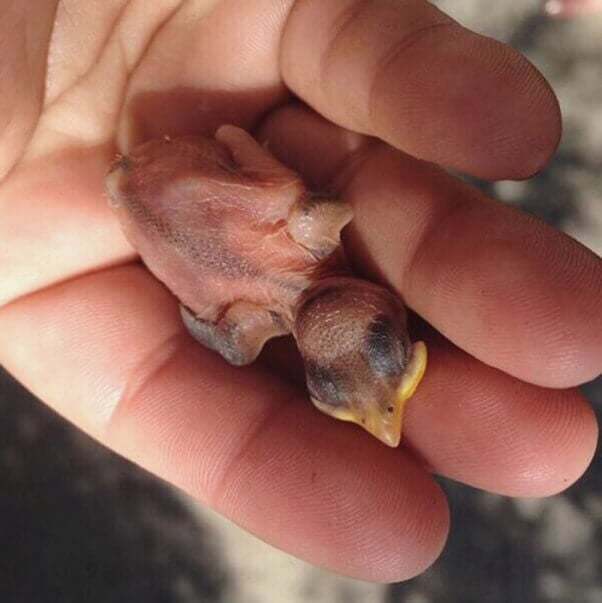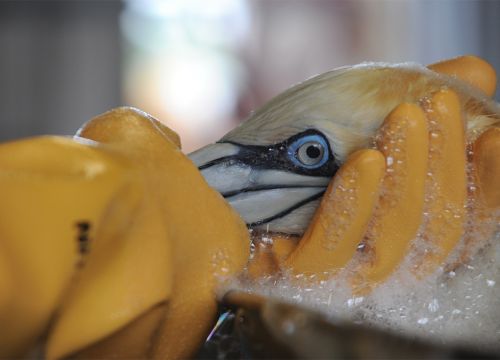What to Do After Rescuing a Bird? Essential Steps for Success
Rescuing a bird can be a rewarding experience. But what comes next?
After you have saved a bird, it is important to know the right steps to help it recover. Birds, like all creatures, need special care when they are injured or in distress. This blog post will guide you through the essential steps to take after a bird rescue.
Whether it’s providing a safe space, ensuring it gets the right food, or knowing when to contact a wildlife expert, we’ve got you covered. By following these steps, you can increase the chances of the bird’s survival and eventual return to the wild. Let’s explore the best ways to care for your feathered friend.
Initial Assessment
After rescuing a bird, the first step is to conduct an initial assessment. This helps you understand the bird’s condition and decide the next steps. Performing a quick, yet thorough check can make a significant difference in the bird’s recovery.
Check For Injuries
Start by gently examining the bird for any visible injuries. Look for wounds, bleeding, or broken bones. Use a soft cloth or towel to hold the bird. This can prevent further stress or injury. Ensure to check both wings and legs. A table below can help you keep track of what to look for:
| Body Part | Signs to Look For |
|---|---|
| Wings | Drooping, bleeding, or visible fractures |
| Legs | Swelling, inability to stand, or wounds |
| Head | Discharge from eyes or beak, or abnormal head position |
If you find any severe injuries, it is best to contact a wildlife rehabilitator immediately.
Determine Species
Identifying the bird’s species can provide insights into its needs. Some birds require specific diets or habitats. Knowing the species helps in providing the right care.
Use a field guide or a bird identification app to assist you. Here is a simple checklist to help:
- Observe the bird’s size and shape.
- Note the color and pattern of its feathers.
- Check the beak shape and size.
- Listen to any calls or sounds it makes.
Knowing the species can also help you find more specific information online or in bird care groups. This ensures the bird gets the best possible care.
Ensure Safety
Rescuing a bird is an act of kindness. But it is crucial to ensure its safety. This means creating a stress-free environment. It also means protecting yourself. Below are steps to help you.
Prepare A Safe Space
First, find a quiet place indoors. Choose a room with no pets or loud noises. Close all windows and doors. This will keep the bird calm and safe. Use a cardboard box or a small cage. Line it with soft towels or paper towels. Avoid using cloth with loose threads. These can harm the bird.
Use Protective Gear
Wear gloves when handling the bird. This protects you and the bird. Birds can carry diseases. Gloves also prevent the bird from scratching you. Use a towel to gently pick up the bird. This keeps the bird secure without hurting it. Always handle the bird with care.
Immediate Care
After rescuing a bird, immediate care is crucial. It ensures the bird’s survival and recovery. Your actions in the first few hours can make a big difference. Here’s what you should do.
Provide Warmth
A rescued bird may be in shock or cold. Keeping it warm is vital. Use a box with holes for air.
- Place a soft cloth or paper towels at the bottom.
- Use a heating pad set on low under half the box.
- Make sure the bird can move away if it gets too warm.
- Keep the bird indoors, away from drafts and pets.
Offer Water
Dehydration is common in rescued birds. Providing water is the next step.
- Use a shallow dish or a small syringe.
- Offer water gently near the bird’s beak.
- Do not force it to drink.
- Check if the bird drinks on its own.
If the bird refuses water, try again after some time. Always be gentle and patient.
Feeding The Bird
Feeding a rescued bird is crucial for its recovery. Birds need proper nutrition to heal and regain strength. Providing the right food ensures their well-being. Let’s explore how to feed a rescued bird effectively.
Identify Suitable Food
First, determine the bird’s species. Different birds have different dietary needs. For example, insect-eating birds need a diet rich in protein. Seed-eating birds prefer grains and seeds. Research the bird species to identify the best food options. Consult a vet if unsure about the bird’s diet.
Feeding Techniques
Use appropriate feeding tools like tweezers or syringes. Hand-feeding can be stressful for the bird. Be gentle and patient while feeding. Place the food near the bird’s beak. Allow the bird to eat at its own pace. Avoid force-feeding, as it can cause harm. Offer small amounts frequently rather than large meals. Monitor the bird’s eating habits to ensure proper nutrition.
Consulting Professionals
After rescuing a bird, the next step is crucial. Consulting professionals can make a big difference in the bird’s recovery. Experts know the right steps to ensure the bird’s health and safety.
Contact Wildlife Rehabilitation Centers
Wildlife rehabilitation centers have trained staff. They can provide the best care for injured birds. Find a local center and call them. Describe the bird’s condition in detail. Follow their advice on what to do next.
Rehabilitation centers have the right tools and knowledge. They can treat injuries and provide proper nutrition. They also know how to handle birds without causing more stress. This is very important for the bird’s recovery.
Seek Veterinary Advice
Veterinarians who specialize in birds can offer expert advice. Not all vets are trained for this, so find one with avian experience. Explain the situation and ask for their help. They might suggest bringing the bird in for an examination.
A vet can check for hidden injuries. They can also advise on feeding and care. Following their recommendations can improve the bird’s chances of survival. Always consult a professional before taking any action.

Credit: www.reddit.com
Monitoring Recovery
After rescuing a bird, the next crucial step is monitoring its recovery. This phase is vital for ensuring the bird regains its strength and health. Proper monitoring helps identify any lingering issues that may need attention. Let’s delve into key aspects of monitoring recovery.
Observe Behavior
Watch the bird’s movements closely. Is it active or lethargic? Energy levels can indicate health status. Note any unusual actions. Look for signs of distress or discomfort. Birds often show their health through behavior. Pay attention to feeding habits. Is the bird eating and drinking well? Check if it sleeps peacefully. These are good signs of recovery.
Track Progress
Keep a daily log of the bird’s condition. Record weight, if possible. Track physical changes like feather growth. Note any improvements or setbacks. This helps in understanding recovery trends. Regular updates assist in making informed decisions. Consult a vet if you notice negative changes. Timely intervention can save the bird’s life. Monitoring progress ensures you are on the right track.
Preparing For Release
After rescuing a bird, your next important step is preparing for its release. This phase ensures the bird is strong, healthy, and ready to return to the wild. Proper preparation maximizes its chances of survival. Let’s explore the key steps involved in preparing a rescued bird for release.
Assess Readiness
First, observe the bird’s physical condition. Check for signs of injury. Ensure its wings are strong and can flap well. Watch for normal behavior. The bird should be alert and active. It must eat and drink on its own. If the bird shows any signs of weakness, seek advice from a wildlife expert.
Find A Suitable Location
Choose a release location carefully. It should be close to where you found the bird. This helps the bird find familiar food sources. The area should have plenty of trees or bushes. These provide shelter and protection from predators. Avoid busy roads and populated areas. The bird needs a quiet, safe environment to adjust back to the wild.

Credit: www.peta.org
Long-term Considerations
After rescuing a bird, it’s important to think about long-term considerations. This ensures the bird’s health and well-being in the future.
Understand Legal Implications
Knowing the legal aspects of bird rescue is crucial. Some birds are protected by law. You might need a permit to keep or care for them. Check local laws and regulations first. Contact wildlife authorities for guidance.
Promote Bird Safety
Creating a safe environment for the bird is essential. Use proper housing and feeding equipment. Ensure the bird has enough space to fly and exercise. Place perches at different heights. This helps mimic their natural habitat.
| Item | Description |
|---|---|
| Housing | Spacious cage with safe materials |
| Feeding | Species-specific diet and fresh water |
| Perches | Natural wood or safe synthetic materials |
| Toys | Engaging and safe for mental stimulation |
Regular check-ups with a vet are important. They help monitor the bird’s health. Vaccinations and parasite control are essential. If the bird is injured, follow the vet’s advice strictly.
Social interaction is vital too. Birds are social creatures. They need interaction to thrive. Spend time with the bird daily. Talk to it, offer toys, and engage in gentle play.
Follow these steps to ensure a healthy and happy life for your rescued bird.

Credit: www.birdrescue.org
Frequently Asked Questions
How Do I Safely Rescue A Bird?
To safely rescue a bird, gently approach it with a towel. Carefully cover the bird and place it in a ventilated box. Keep it warm and quiet. Contact a wildlife rehabilitator immediately.
What Should I Feed A Rescued Bird?
Feeding a rescued bird can be tricky. It’s best to avoid feeding it until you consult a wildlife rehabilitator. Improper food can harm the bird.
How Can I Keep A Rescued Bird Safe?
Keep the rescued bird in a warm, dark, and quiet place. Minimize handling and keep it away from pets and children. Contact a wildlife rehabilitator quickly.
When Should I Release A Rescued Bird?
Release a bird only when it is healthy and strong. A wildlife rehabilitator can guide you on the right time and procedure.
Conclusion
Caring for a rescued bird is rewarding. Ensure it has food and water. Monitor its health closely. Seek help from a vet if needed. Provide a safe, quiet space for recovery. Handle the bird gently and minimally. Release it back into the wild when ready.
Your effort can save a life. Thank you for making a difference.
Hello Dear, I'm Poli Kolymnia, owner of many birds (including budgies).
With a deep passion for these feathered companions, I'm here to share my expertise and extensive knowledge on birds care.
My articles cover essential topics like diet, housing, care, and health, providing practical tips to help you create a happy and thriving environment for your birds.






